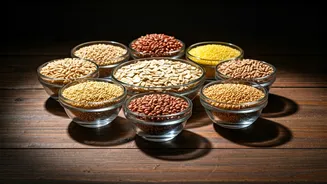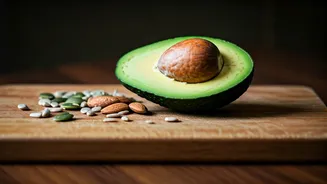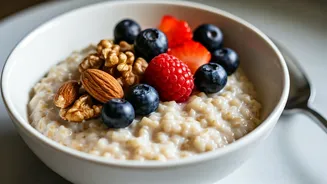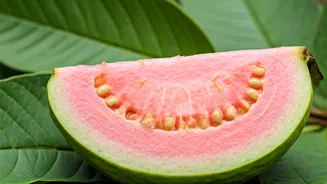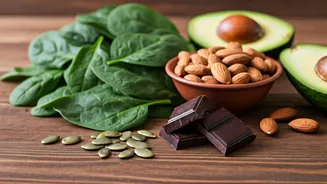Introduction to Grains
Grains are fundamental in human diets worldwide, offering essential carbohydrates, fiber, vitamins, and minerals. However, not all grains are created equal,
especially for individuals with diabetes. Certain grains can cause rapid blood sugar spikes, while others offer a slow, steady release of glucose, making them ideal for managing diabetes. The selection of the right grains is crucial. This article focuses on ten diabetes-friendly grains that support blood sugar control and promote long-term health. These grains are chosen for their low glycemic index, high fiber content, and ability to improve insulin sensitivity. Incorporating these grains into your daily diet can significantly impact your blood sugar levels and overall well-being. Understanding the nutritional value and benefits of each grain will empower you to make informed dietary choices, leading to improved health outcomes and a better quality of life.
Oats: A Champion Grain
Oats, a breakfast staple, are an excellent choice for individuals with diabetes. They are rich in soluble fiber, which helps slow the absorption of sugar into the bloodstream, preventing drastic blood sugar spikes. Studies have shown that consuming oats can improve blood sugar control and reduce the need for insulin in some individuals. Oats also contribute to feelings of fullness, aiding in weight management, a critical aspect of diabetes care. To maximize the benefits, choose steel-cut or rolled oats over instant oats, as they have a lower glycemic index and provide more fiber. Start your day with an oatmeal bowl, or integrate oats into your baking recipes for a wholesome and diabetes-friendly meal. The high fiber content in oats promotes gut health and supports overall cardiovascular wellness, making oats an all-around health-boosting option.
Quinoa: The Versatile Seed
Quinoa, often treated as a grain, is a complete protein, meaning it contains all nine essential amino acids. This makes it an outstanding choice for overall health and muscle maintenance. Quinoa has a low glycemic index, meaning it causes a slower and more gradual rise in blood sugar levels compared to other grains. The fiber content in quinoa also aids in digestion and helps regulate blood sugar. Quinoa is incredibly versatile and can be used in various dishes, from salads to side dishes, replacing rice or other less healthy grains. It is also gluten-free, making it suitable for individuals with gluten sensitivities or celiac disease. Its rich nutrient profile, including iron and magnesium, contributes to sustained energy levels and overall well-being. Regular consumption of quinoa can support better blood sugar management and enhance overall health.
Barley: Fiber-Rich Option
Barley is a grain celebrated for its high fiber content, particularly beta-glucan, which has been shown to improve blood sugar control. The fiber in barley slows down the digestion of carbohydrates, preventing sharp increases in blood sugar after meals. Barley is a good source of vitamins, minerals, and antioxidants, contributing to overall health. It has a slightly nutty flavor and can be used as a substitute for rice or in soups and stews. Incorporating barley into your diet supports heart health due to its ability to lower cholesterol levels and aids in weight management by promoting satiety. To experience maximum benefits, opt for whole-grain barley rather than pearled barley, as the whole-grain variety retains more of its fiber and nutrients. This grain is an excellent option for those looking to manage their blood sugar while enjoying a flavorful and nutritious diet.
Brown Rice: Whole Grain Choice
Brown rice is a whole-grain alternative to white rice, offering significantly more fiber and nutrients. Its fiber content slows down the absorption of glucose, leading to more stable blood sugar levels. Brown rice also provides essential minerals like magnesium, which helps improve insulin sensitivity. The nutty flavor and chewy texture of brown rice make it a satisfying addition to any meal. Using brown rice in place of white rice is a simple yet effective way to improve your diet and manage diabetes. It's also rich in antioxidants, which protect the body from damage by free radicals. Including brown rice in your diet can contribute to better blood sugar control, improved cardiovascular health, and overall nutritional balance. Brown rice is a solid base for meals.
Buckwheat: Gluten-Free Benefit
Despite its name, buckwheat is not related to wheat; it is a gluten-free seed. It has a low glycemic index and provides substantial fiber, supporting stable blood sugar levels. Buckwheat contains rutin, an antioxidant that has been linked to improved blood vessel health and reduced inflammation. Buckwheat can be used to make various dishes, including pancakes, noodles (soba noodles in Japanese cuisine), and porridge. Its unique flavor and nutritional profile make it a valuable addition to a diabetes-friendly diet. Buckwheat is an excellent source of magnesium, which helps regulate blood sugar levels. Its gluten-free nature makes it suitable for individuals with celiac disease or gluten sensitivities, as well as those managing diabetes. Regular consumption supports overall cardiovascular health and helps manage blood sugar levels.
Bulgur: Quick & Nutritious
Bulgur is a whole-grain wheat product that is parboiled, dried, and cracked, making it quick to cook. It has a low glycemic index and is rich in fiber, which helps manage blood sugar levels. Bulgur is a great source of iron, magnesium, and other essential nutrients. Its nutty flavor and versatility make it a popular ingredient in salads (like tabbouleh), side dishes, and soups. Because it’s partially cooked during processing, it cooks faster than other whole grains. Bulgur provides a satisfying texture and taste to meals, offering a convenient way to incorporate whole grains into your diet. Regular consumption of bulgur supports digestive health due to its fiber content and contributes to the overall nutritional balance of the diet. Bulgur helps in regulating blood sugar levels.
Millet: Ancient Grain Power
Millet, an ancient grain, is gluten-free and has a low glycemic index, making it suitable for individuals with diabetes. It is a good source of magnesium and fiber, which helps control blood sugar levels. Millet has a mild flavor and can be used in porridge, as a side dish, or in salads. It is also easy to digest, making it a good choice for those with sensitive stomachs. Millet supports heart health by helping lower cholesterol levels and reduces the risk of cardiovascular diseases. Incorporating millet into your diet provides essential nutrients and aids in managing blood sugar. Its versatility makes it a great substitute for rice or other grains in various recipes, while providing numerous health benefits. Millet is an excellent dietary choice for overall well-being.
Whole-Wheat Pasta: Smart Choice
When choosing pasta, opting for whole-wheat pasta over white pasta is essential for individuals with diabetes. Whole-wheat pasta contains more fiber, which helps slow down the absorption of sugar into the bloodstream, preventing blood sugar spikes. It also provides essential nutrients like fiber and magnesium. Whole-wheat pasta offers a more sustained release of energy, which is better for blood sugar management. When preparing whole-wheat pasta, it's essential to cook it al dente to maintain a lower glycemic impact. Pair your pasta with vegetables and lean protein for a balanced meal. The higher fiber content supports digestive health, and the whole grains provide essential nutrients. Choose whole-wheat pasta for diabetes-friendly benefits.
Amaranth: Nutrient-Dense Grain
Amaranth, a gluten-free pseudo-cereal, is another nutrient-dense grain option that is suitable for people with diabetes. It has a low glycemic index and is high in fiber, which helps regulate blood sugar levels. Amaranth also provides complete protein, meaning it contains all nine essential amino acids. It's a good source of iron, magnesium, and other essential nutrients. The versatile grain can be used to make porridge, add to salads, or be incorporated into baking recipes. Its unique nutritional profile and easy digestibility make it a great addition to your diet. The high fiber content also helps in weight management. Regular consumption supports better blood sugar control and provides a wealth of essential nutrients for overall health. Amaranth is an excellent, healthy grain for those with diabetes.
